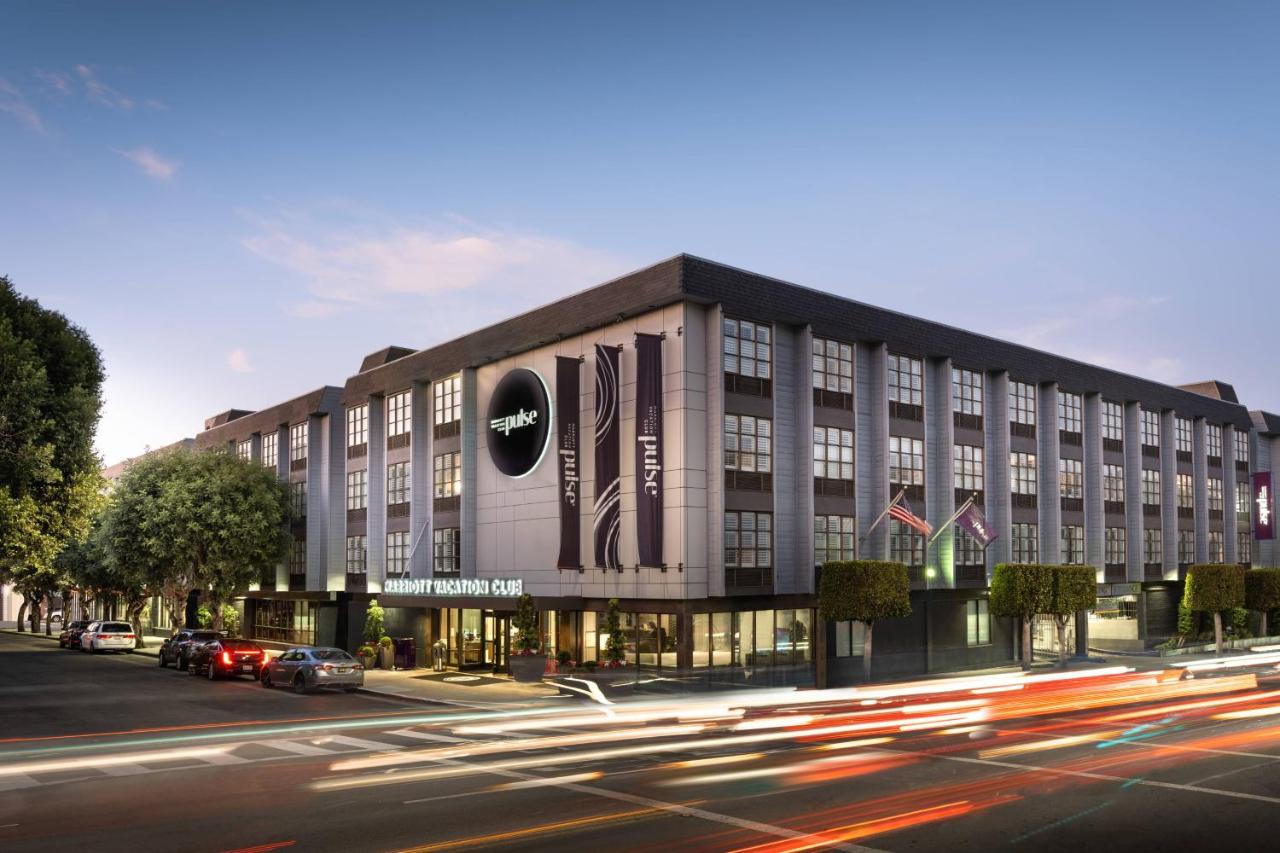The Marriott Pulse properties – chasing Airbnb…

30 May 2023
I recently had the pleasure of touring one of Marriott’s newest vacation club properties, the Marriott San Diego Pulse. My wife and I were visiting friends in Escondido and decided to head south to San Diego to check out the city and tour the Pulse. Located in the Gas Lamp quarter and close to Balboa Park, the Pulse enjoys great shopping and hundreds of dining options within easy walking distance to the Vacation Club. One of the sales reps showed us around the lobby, fitness area and took us up to see a room. The room we previewed was categorized as a hotel room, however, it was much more spacious than a typical hotel room with a separate bedroom and small living room/kitchen area complete with an incredible view of the surrounding city. Although not nearly as spacious as the standard two-bedroom villa commonly found at the majority of Marriott Vacation Clubs, this hotel/vacation club hybrid was very nice and had obvious appeal to those looking for a short stay in the city.
The Pulse properties by Marriott represent the newest expansion of the Marriott Vacation Club brand into urban locales such as New York City, Miami, Washington DC, and Boston.
By looking at the changing demographics of the Marriott Vacation Club, we see many owners transforming into empty nesters who had previously used their ownership to vacation with their children. As the kids grow up and leave the home, Marriott is certainly doing its market research to explore new venues in which to expand their Vacation Club system. It makes a lot of sense for the newest vacation clubs to be located in urban locales typically monopolized by hotels and Airbnb.com rentals. Empty nest owners no longer need the larger accommodations and full kitchens, as they are traveling without the full family.
The aging of Vacation Club owners is a given and the Pulse properties are part of Marriott’s strategy in filling that vacation gap until the empty nesters become grandparents and the cycle of full resort vacationing begins anew. The Pulse properties are also part of Marriott’s overall sales and marketing strategy aimed at the next generation of potential owners, millennials who are more likely to be attracted to shorter stays and culturally rich urban centers.
However, there is another factor in the mix as well: the long-established hoteliers such as Marriott and Hilton are being left in the dust by the previously mentioned market disrupter Airbnb.com.
The newest hospitality company Airbnb is less than 10 years old and doesn’t own a single hotel room, yet the company was recently valued at 30 Billion. To put that in perspective, Airbnb enjoys a valuation greater than the Hilton (22B) and Hyatt (6B) combined!
Marriott has been in business some 90 years and for them to witness a small startup blow up and fly past them must have made quite an impact (although with the recent acquisition of Starwood hotels Marriott’s Valuation is still higher than Airbnb’s). Marriott International is a separate company from Marriott Worldwide Vacations Worldwide, the current owner, and operator of the Marriott Vacation Club, but Marriott Vacation club is partly owned by Marriott International and heavily influenced by the Mothership.
Marriott, along with the other hoteliers, is witnessing a hospitality market disruptor comparable to Tesla, Uber or Netflix. All these companies deliver a service or product that had heretofore been monopolized by big auto/oil, passenger fare, and the cable companies. And there is more to it just being a new system provider, Airbnb doesn’t just meet a market demand, it had created a market demand, namely the demand for spacious, home-away-from-home type accommodations in cities that had been previously relegated to the very rich in the form of high-end luxury suites or apartment rentals. Prior to Airbnb, it was nearly impossible to stay in a short term condo accommodation in the city without paying exorbitant rates. Airbnb opened the condos and apartments of thousands of city dwellers throughout the world and unlocked millions of accommodations previously unavailable to the market.
Success leaves clues, and Marriott is eager to quickly step into the market by offering their hybrid hotel/apartment in hopes of cashing in on the demand for spacious accommodations in culturally rich city centers. And speaking of quick: Marriott has opened five pulse properties in the last two years and offers non-Pulse locations in Las Vegas and San Francisco as well.
The Pulse properties look to do well by eschewing the paint-by-number 300 sq ft hotel rooms long offered by the most prominent hoteliers and focusing on offering larger and better-equipped accommodations complete with the activities geared toward city exploration and experience.
The introduction of the Pulse properties by Marriott makes sense in three respects:
It’s attractive to empty nest owners that wish to use ownership to travel in smaller groups or as couples without kids outside the typical resort environment.
It’s attractive to the next generation of potential owners, the millennials, who may find themselves with smaller families or no kids and seek to travel for shorter periods of time than typically offered by the traditional timeshare marketplace.
It taps into the overall demand for spacious urban accommodations so expertly exploited by Airbnb.
Marriott will certainly look to push the Pulse properties, as the era of super resort construction ended during the last market crash (Marriott Vacation club wrote off a 750 million dollar super resort planned for Aruba in 2008). Marriott now looks to capitalize on their changing owner demographic, court the new generation of Vacation club owners and invest in transforming already-existing properties that require a great deal less in capital commitment than the previous Marriott vacation club build outs.